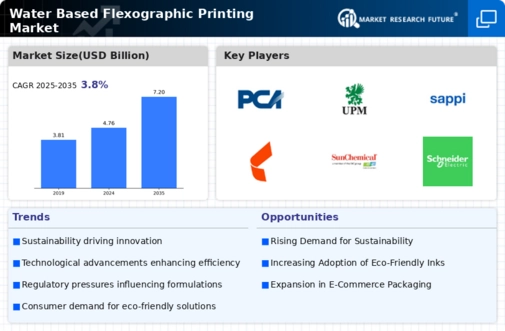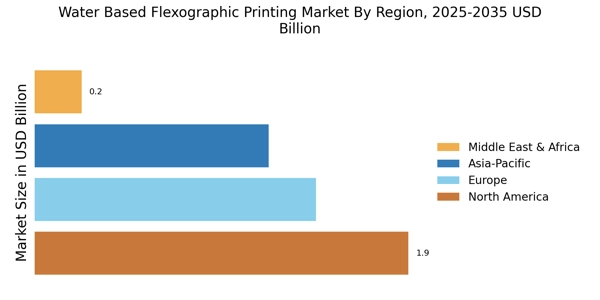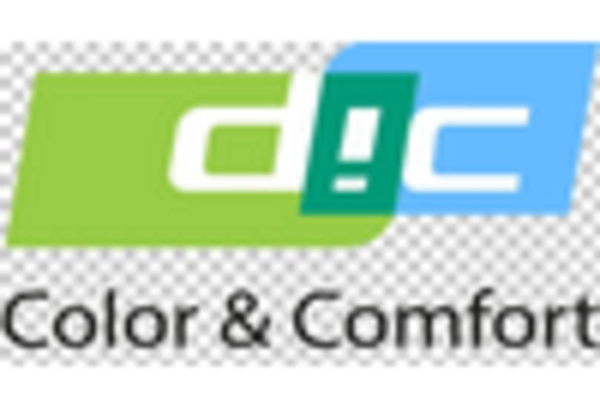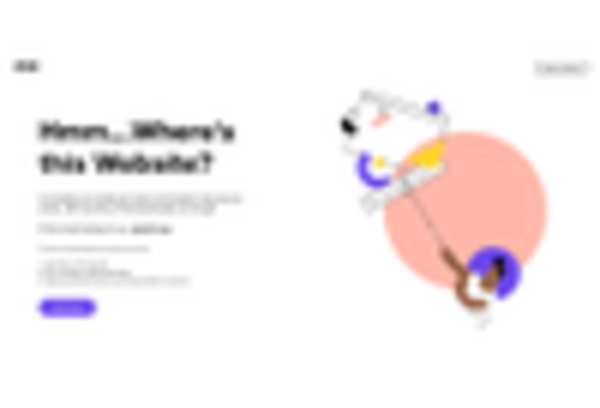Cost-Effectiveness
Cost-effectiveness remains a vital driver in the Water Based Flexographic Printing Market. Water-based inks are generally less expensive than their solvent-based counterparts, leading to lower production costs for manufacturers. Additionally, the reduced need for extensive ventilation systems and safety measures associated with solvent inks further contributes to cost savings. In 2025, it is estimated that companies utilizing water-based flexographic printing could achieve a 12% reduction in overall production costs. This financial advantage allows businesses to allocate resources more efficiently, ultimately enhancing their competitive edge in the market.
Regulatory Compliance
Regulatory compliance is increasingly influencing the Water Based Flexographic Printing Market. Stricter environmental regulations are compelling manufacturers to transition from solvent-based to water-based inks. This shift is driven by the need to comply with regulations aimed at reducing environmental impact and promoting public health. In 2025, it is anticipated that compliance with these regulations will drive a 15% increase in the adoption of water-based inks among packaging companies. This trend not only ensures adherence to legal standards but also positions companies favorably in the eyes of consumers who prioritize sustainability.
Technological Innovations
Technological advancements play a crucial role in shaping the Water Based Flexographic Printing Market. Innovations in printing technology, such as improved ink formulations and advanced printing machinery, enhance print quality and efficiency. The introduction of digital flexographic printing systems has further revolutionized the industry, allowing for shorter production runs and reduced waste. In 2025, the market is expected to benefit from a projected increase in the adoption of automation and smart technologies, which could lead to a 10% reduction in operational costs for manufacturers. These advancements not only improve productivity but also enable companies to respond swiftly to changing market demands.
Sustainability Initiatives
The increasing emphasis on sustainability within the Water Based Flexographic Printing Market is a pivotal driver. Companies are increasingly adopting eco-friendly practices, which include the use of water-based inks that reduce volatile organic compounds (VOCs) emissions. This shift aligns with regulatory pressures and consumer demand for greener products. As a result, the market is witnessing a surge in investments aimed at developing sustainable printing solutions. In 2025, the market for water-based inks is projected to reach approximately USD 5 billion, reflecting a compound annual growth rate (CAGR) of around 4.5%. This trend not only enhances brand reputation but also meets the growing expectations of environmentally conscious consumers.
Consumer Demand for Customization
The rising consumer demand for customization is a significant driver in the Water Based Flexographic Printing Market. As brands seek to differentiate themselves, personalized packaging solutions are becoming increasingly popular. Water-based flexographic printing offers the flexibility to produce customized designs efficiently, catering to diverse consumer preferences. In 2025, the market is projected to see a 20% increase in demand for customized packaging solutions, driven by the need for brands to create unique consumer experiences. This trend not only enhances brand loyalty but also encourages innovation in design and printing techniques.


















Leave a Comment